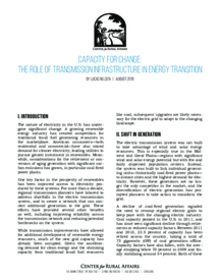One key factor in the prosperity of renewables has been improved access to electricity produced by these systems. For more than a decade, regional transmission planners have labored to address shortfalls in the electric transmission system, and to create a network that can connect additional generation to the grid. These efforts have provided several other benefits as well, including improving reliability across the transmission network and reducing potential bottlenecks on the system.
While transmission improvements have allowed for additional development of renewable energy resources, much of the new grid capacity has already been occupied. Given the accelerating demand for clean energy and the shrinking capacity from traditional fossil fuel resources like coal, subsequent upgrades are likely necessary for the electric grid to adapt to the changing landscape.


